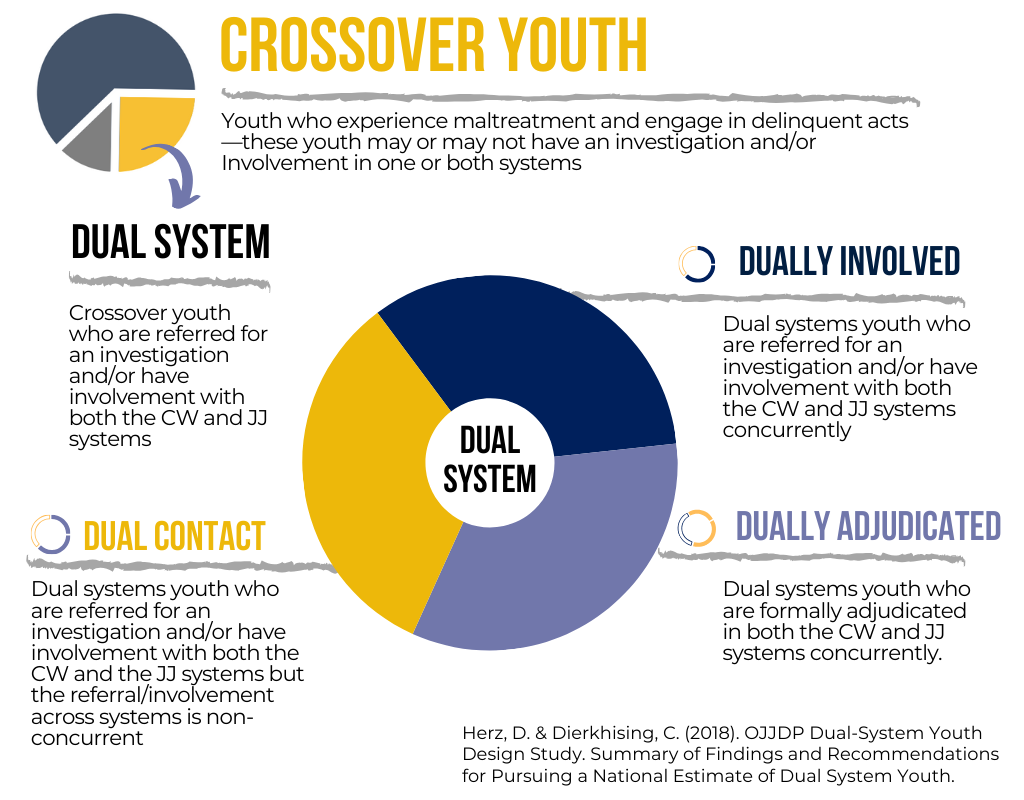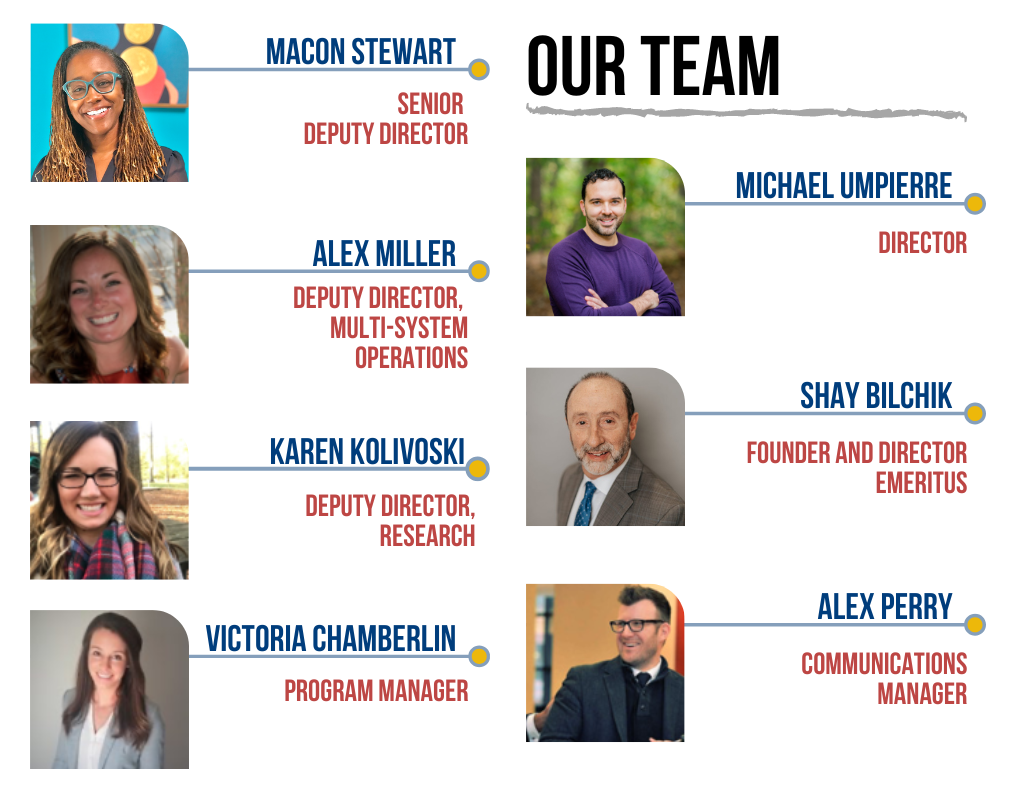Crossover Youth Practice Model
In 2010, CJJR developed the Crossover Youth Practice Model (CYPM) to address the unique needs of youth that are at risk of or are fluctuating between the child welfare and juvenile justice systems. These youth are commonly referred to as “crossover youth.”

What is the Crossover Youth Practice Model?
A practice model is a conceptual map and organizational ideology that includes definitions and explanations regarding how staff partner with families, service providers, and other stakeholders in the delivery of services to achieve positive outcomes for youth and their families.
The Crossover Youth Practice Model is a nexus between research and best practices that outlines systemic changes youth serving systems can make to improve their ability to serve youth.
The CYPM has four overarching goals:
- Reduction in the number of youth crossing over and becoming dually-involved;
- Reduction in the number of youth placed in out-of-home care;
- Reduction in the use of congregate care; and
- Reduction in the disproportionate representation of youth of color, particularly in the crossover population
Participating Jurisdictions
To date, the CYPM has been implemented in over 120 counties in 23 states across the US. CJJR is excited to continue its active partnership with the following communities: Clackamas County, Oregon; Harris County, Texas; Baltimore County and City, Maryland; Douglas County, Nebraska; Bannock, Power, and Oneida County, Idaho; and City of Alexandria, Virginia; and state-level work with Missouri and Kansas.
Becoming a CYPM Site
Interested in becoming a Crossover Youth Practice Model implementation partner? We have active, rolling applications available to join.
Implementing the Model
The Center for Juvenile Justice Reform provides on-site training and technical assistance to communities implementing the Model. Through implementation, jurisdictions will strengthen their organizational structure and develop or improve practices that have an impact on the day-to-day experiences of youth who have crossed over or are at risk of crossing over.
Training and Technical Assistance
Training and Technical assistance includes:
- A Gap Analysis of the jurisdiction’s current ability to support crossover youth
- Training on the Practice Model, including a review of the academic research and independent data showing the effectiveness of the Model
- The development of a work plan to structure the technical assistance activities
- Support in the creation of new policies and procedures, (i.e. crossover protocol manual) related to the implementation of the Model
- An evaluation package to measure the effectiveness of the model in the jurisdiction
- Peer-to-peer learning opportunities with other sites in the CYPM network
Data collection is an important component of the model. The CYPM emphasizes the importance of developing cross-systems data capacity and the need to use good data to make program and policy decisions.
Locally Tailored
Tailored to the needs of each participating jurisdiction, the implementation of the model ensures that practices are consistent for all youth within a system and resources are shared between the systems to maximize their impact. This will include but is not limited to the following practices: creating a process for identifying youth at the point of crossing over, ensuring that workers are exchanging information in a timely manner, ensuring that foster care bias is not occurring at the point of detention or disposition, and maximizing the services utilized by each system to prevent crossover from occurring.
Outcomes, Research, and Evaluation
Since launching the CYPM in 2010, the Model has grown substantially in communities across the country. In 2017, we celebrated reaching our 100th jurisdiction, and those numbers continue to grow each year. CJJR works closely with jurisdictions to collect, analyze, and provide data that demonstrates the Model’s impact.
In 2018, the California Evidence-Based Clearinghouse for Child Welfare (CEBC) rated the CYPM as having “Promising Research Evidence” with “High” relevance to child welfare; the ranking with CEBC has been maintained to date. In 2020, the United States Department of Justice (DOJ) Office of Justice Programs, National Institute of Justice also identified the Model as a “Promising Program” in juvenile justice and added it to its CrimeSolutions.gov website. Additionally, Department of Justice’s Office of Juvenile Justice and Delinquency Prevention also designated the CYPM as a “Promising Program” in its Model Programs Guide.
Our CYPM Team

